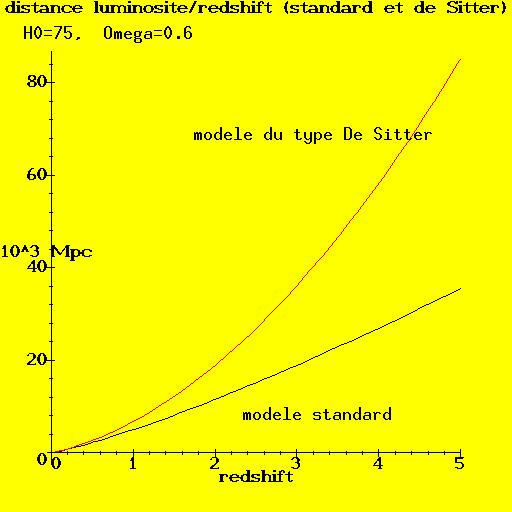 return
return  return
return 
 |
For Omega=0.7 and Ho=65, the universe is 22
billion years old. It is near the double of the age given by
the standard models OCDM and LambdaCDM . Ho=75 was the average value accepted in 1996, BUT Following the measurements made by Hipparcos, and other measurements (1997):
During the year 2000, 55< = Ho<=75
is usually used and in this year 2001, let us announce the point made
by Mr. Rowan-Robinson (astro-ph/0012026) which gives Ho = 63 + / - 6. |


| For redshift from 1 to 5 (interesting for the quasars) the luminosity distance varies from the simple one to 3 between the two types of models! | 
|

 |
Ouf the angular distance is well increasing with the redshift! |